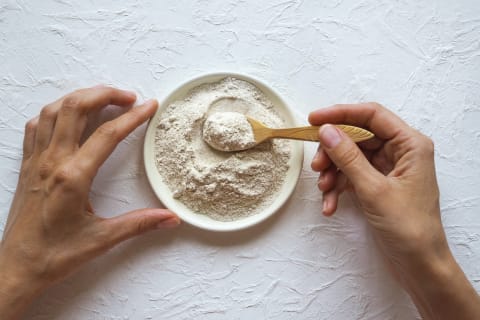So what’s really to blame for these symptoms? In my experience, PMS in many patients is associated with higher estrogen and lower progesterone states. Estrogen is a proliferative hormone, meaning it causes the lining of your uterus to grow or thicken. The higher your estrogen, the thicker it gets and the more you bleed. Progesterone is a more soothing, calming hormone. It’s also an anti-proliferative hormone, meaning it keeps that growth in check. But what if week four of your cycle didn’t have to be so dreadful? Consider these natural solutions to reduce high estrogen and boost progesterone—ultimately improving PMS symptoms and that heavy bleeding! Considering lifestyle changes like setting healthy boundaries and saying no to what is not an absolute “yes” can help your body keep functioning as it should. Deep breathing, meditation, and calming exercise like yoga have proved helpful for reducing stress as well. The mineral magnesium is soothing and calming, excellent for reducing menstrual cramps, assisting with sleep, reducing headaches, and even boosting mood. It also is a cofactor for both progesterone production and neurotransmitter production like serotonin. Vitamins are very important for your adrenals and for energy during this time of the month. B vitamins, specifically, help the liver break down estrogen levels to control its amount and maintain hormonal balance. B’s are also important for neurotransmitter production like serotonin (which makes you feel good). Lastly, omega-3 fatty acids like fish oil are anti-inflammatory, which can help reduce menstrual cramps and actually reduce heavy bleeding. It’s always a good idea to work with your doctor, a functional medicine expert, or a hormone specialist when considering supplementing. They can help you narrow down the options and find the nutrient and dosage that will work for you. Lastly, when you’re dealing with a hormone imbalance, it’s a good idea to choose safe personal care products that are free from endocrine-disrupting chemicals like parabens and phthalates. Consider using the Environmental Working Group to learn whether your products are safe or only contributing to your PMS. Hopefully, these five steps can help you no longer dread that monthly cycle!



